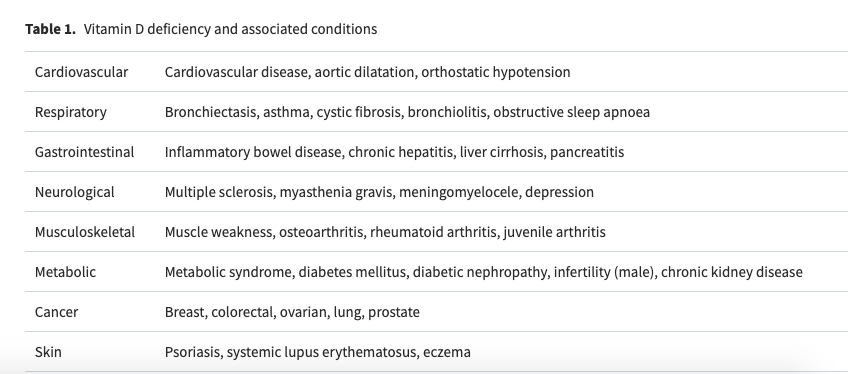Are you short of Vitamin D? Vitamin D deficiency is a global health problem, affecting millions of people around the world. You probably know that a Vitamin D deficiency is caused by insufficient exposure to sunlight. In and of itself that doesn’t sound to serious, but Vitamin D also plays a vital role in keeping your bones strong. In fact it plays a crucial role in a myriad of different bodily functions, from your immune system, to muscle strength, to mood.
For older adults making sure you get enough Vitamin D is super important.
Here’s what you need to know about the importance of Vitamin D for seniors, the symptoms of deficiency and what you can do about it.
Who is Most at Risk for Vitamin D Deficiency?
The two primary causes of Vitamin D deficiency are insufficient dietary intake and limited sunlight exposure. The latter immediately places mobility impaired, home and bed bound individuals and/or residents of care facilities, at heightened risk.
But there are additional contributing factors to consider, including certain medical conditions, such as cystic fibrosis, Crohn’s disease, and Celiac disease; some medications including laxatives, steroids, and cholesterol-lowering drugs; and biological factors such as skin pigmentation.
Individuals over 65, and infants, particularly those exclusively breastfed, are also at heightened risk.
The Importance of Vitamin D for Seniors
Many of us understand the importance of Vitamin D in building and maintaining healthy bones. But, it also helps with anti-inflammation, immune support, muscle function, generating brain cells, and the production of antioxidants. Older people most especially need to have enough Vitamin D in their diet to maintain their bone health and prevent damage to their bones or muscles when they fall. The problem is once we pass the 65 mark, our bodies actually produce less Vitamin D, exactly when we need it the most!
Benefits of Vitamin D for Seniors
Think of Vitamin D as the superhero of bone health – it helps your body absorb calcium, which is key for keeping bones strong and fending off deterioration.
It also tackles muscle weakness, especially in those muscle groups close to the core. A shortage of this vitamin is often the underlying cause in everything from slower walking speeds, to struggling to stand up from a chair, to weaker thigh muscles, contributing to increased risk of falls.
Vitamin D is like the multitasking wizard of the body, playing a crucial role in a whole range of age-related health issues, from bone health to circulation, digestion to immune system and inflammation management. It even has receptors present in our nervous, heart, and hormone systems.
Symptoms of Vitamin D Deficiency
The primary symptoms of Vitamin D deficiency include muscle weakness, fatigue, digestive issues, unexplained weight gain, and cognitive changes, in other words, our ability to relate, observe, think, problem solve, and remember. Hypertension, depression, and cognitive decline are common side-effects. Sudden muscle weakness, in particular, could indicate an underlying deficiency, requiring prompt intervention.
Vitamin D deficiency has also been linked to an array of larger health problems; from cancer (especially colon cancer), to musculoskeletal conditions like osteoporosis; diabetes and heart disease.
In short, when Vitamin D levels are low, it tends to worsen just about everything. But the good news is, as vast as its influence is, so is its potential for recovery.
Table source: https://www.ncbi.nlm.nih.gov/
How is Vitamin D Deficiency Diagnosed?
Medical practitioners don’t routinely check Vitamin D levels, so if you’re concerned about whether you’re getting enough Vitamin D or not, talk to your doctor.
If you are over the age of 65 you would be well advised to request a blood test, particularly the 25-hydroxyvitamin D test, which is used to diagnose deficiency.
If you are at high risk for Vitamin D deficiency, in other word, are overweight, have a darker complexion and who are older than age 65, its likely they will recommend more regular checks just to ensure your Vitamin D levels remain within a healthy range.
So how much Vitamin D is enough?
Well, that depends on your age and lifestyle.
The average daily recommended amounts are listed below in micrograms (mcg) and International Units (IU).
Infants up to 12 months old 10 mcg (400 IU)
People 1 to 70 years old 15 mcg (600 IU)
Adults 71 years and older 20 mcg (800 IU)
Pregnant and breastfeeding people 15 mcg (600 IU)
Treatment and Prevention
The best way to prevent Vitamin D deficiency is to ensure you’re getting enough Vitamin D in your diet and/or through sun exposure. But be careful about being in the sun for too long. Anything over half an hour puts you at an increased risk for skin cancer.
Best practice would be to increase your intake of Vitamin D-rich foods, alongside the appropriate supplementation advised by your doctor.
Foods like mushrooms, egg yolks, and fatty fish and seafood (tuna, sardines, oysters, shrimp, and more) are excellent sources of Vitamin D. And dairy products, orange juice, and breakfast cereal, are also often fortified with Vitamin D. Just double check the label before you purchase, it must clearly state ‘fortified’.
Diet changes aside, your doctor will also most likely recommend supplements or vitamins that contain large amounts of Vitamin D. Vitamin D tablets can be large and difficult to swallow, so consider purchasing the chewable versions of these products
Conclusion
Vitamin D deficiency can be a problem at any age, but it becomes more pronounced as we age. Seniors that maintain healthy levels of Vitamin D are more likely to enjoy better health, vitality and mobility.
If you’re concerned about getting enough Vitamin D, talk to your doctor today.
References:
https://www.webmd.com/healthy-aging/what-to-know-about-vitamin-d-dosage-for-older-adults
Vitamin D Deficiency in the Elderly: Symptoms and Importance for Seniors
https://www.webmd.com/vitamins/ai/ingredientmono-929/vitamin-d
https://my.clevelandclinic.org/health/diseases/15050-vitamin-d-vitamin-d-deficiency
https://www.health.com/lower-vitamin-d-levels-inflammation-older-adults-7642303


